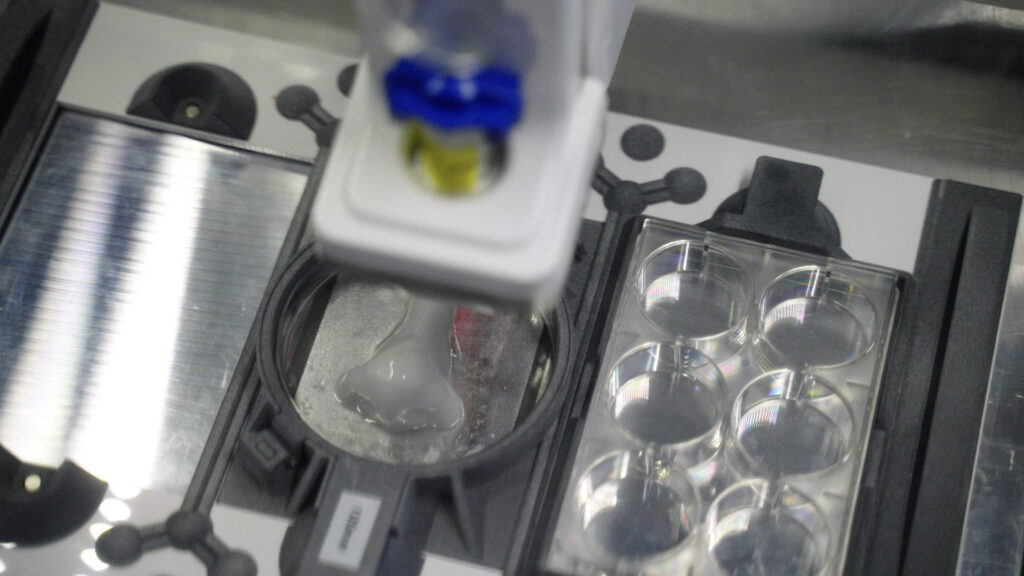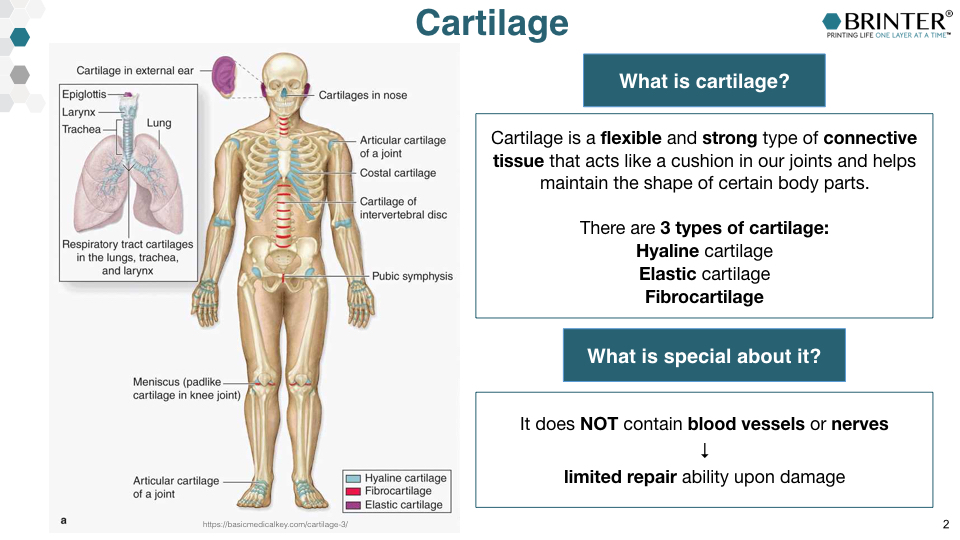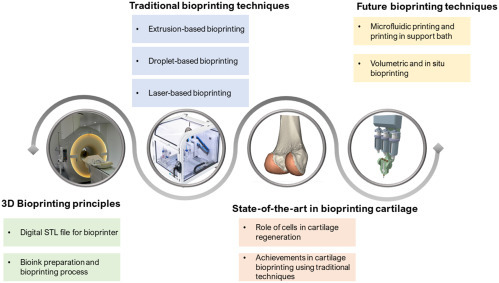Brinter AM Proudly Contributes to STRONG-UR Consortium: Revolutionizing Tissue Reconstruction with Bioprinting

Advancing Regenerative Medicine Through Innovation Brinter AM is proud to be a key partner in the STRONG-UR project, which introduces a unique combination of novel manufacturing technologies and advanced biomaterials. This initiative is set to transform tissue reconstruction and make healthcare more accessible. With a primary focus on regenerative medicine, STRONG-UR is advancing the fabrication […]
ADVANCED ELECTRONIC MATERIALS// Multistep Fabrication of OECTs via Direct Ink Writing, With Performance Analysis Based on a Novel Measurement Protocol
https://onlinelibrary.wiley.com/doi/10.1002/aelm.202400742 Abstract Organic electrochemical transistors (OECTs) have been proven beneficial for bioelectronic applications. However, the demand for reliable and fast fabrication methods has not yet been fully met. In this work, OECTs are fabricated using direct ink writing (DIW). This method is cleanroom-free and can be done without using lithography techniques. These devices are characterized and […]
BIO INX, Puredyne, and AM Technologies by Brinter Unite to Revolutionize Standardization and Reproducibility in Extrusion Bioprinting

Turku, Finland – 20/11/2024 – AM Technologies by Brinter, an innovator in bioprinter manufacturing, Puredyne, a pioneer in extrusion printhead technology, and BIO INX, a leader in advanced bioinks, are proud to announce a groundbreaking collaboration aimed at achieving unparalleled standardization and reproducibility in extrusion-based bioprinting. This partnership builds upon the existing collaboration between BIO […]
#Wiley, #Elsevier and #ScienceJournal – Polymer microsphere inks for semi-solid extrusion 3D printing at ambient conditions
Abstract https://doi.org/10.1016/j.jmbbm.2024.106783 Extrusion-based 3D printing methods have great potential for manufacturing of personalized polymer-based drug-releasing systems. However, traditional melt-based extrusion techniques are often unsuitable for processing thermally labile molecules. Consequently, methods that utilize the extrusion of semi-solid inks under mild conditions are frequently employed. The rheological properties of the semi-solid inks have a substantial impact […]
Wiley – Experimental investigation of PCL-based composite material fabricated using solvent-cast 3D printing process
Abstract https://onlinelibrary.wiley.com/doi/abs/10.1002/pat.6416?casa_token=WQcKEetHLSgAAAAA%3Alg7G6z9JBMJM0wxuWkL16agBgvuFZag7mTRWy7pvGBYfCzHwxTvcgOtXUfH7yVbRAa9NuSTpdua5V7E Bone tissue engineering relies on scaffolds with enhanced mechanical properties, achievable through 3D printing techniques. Our study focuses on enhancing mechanical properties using a solvent-cast 3D printing method. For this, poly-ε-caprolactone (PCL) reinforced with polyhydroxybutyrate (PHB), and synthetic fluorapatite (FHAp) nanopowders were utilized, immersed in a solution of dichloromethane (DCM) and dimethylformamide (DMF). […]
Springer – Spatial Engineering of Mammary Epithelial Cell Cultures with 3D Bioprinting Reveals Growth Control by Branch Point Proximity
Abstract https://link.springer.com/article/10.1007/s10911-024-09557-1 The three-dimensional (3D) structure of the ductal epithelium and the surrounding extracellular matrix (ECM) are integral aspects of the breast tissue, and they have important roles during mammary gland development, function and malignancy. However, the architecture of the branched mammary epithelial network is poorly recapitulated in the current in vitro models. 3D bioprinting […]
Royal Society of Chemistry / Green Chemistry – Employing photocurable biopolymers to engineer photosynthetic 3D-printed living materials for production of chemicals
https://pubs.rsc.org/en/content/articlehtml/2024/gc/d3gc04264b#fn1 Abstract Photosynthetic microorganisms, such as cyanobacteria and microalgae, have great potential as living cell factories for chemical and fuel production. Immobilisation of cells is an effective technique for enhancing productivity and longevity of the production system, as well as aiding in the separation of cells from the medium. Alginate crosslinked with divalent ions is […]
Advanced functional materials – Bioprinting Macroporous Hydrogel with Aqueous Two-Phase Emulsion-Based Bioink: In Vitro Mineralization and Differentiation Empowered by Phosphorylated Cellulose Nanofibrils
Abstract https://onlinelibrary.wiley.com/doi/full/10.1002/adfm.202400431 Aqueous two-phase emulsion (ATPE)-based bioinks, a creative innovation for bioprinting, enable the fabrication of complex 3D cell-laden hydrogels with macroporous structure, which promote cellular activities within the scaffold. However, these bioinks intrinsically lack stability and specific biofunctionality, potentially limiting their application for targeted tissue engineering. This study proposes a new perspective by introducing […]
Materials Advances – A comprehensive study on rheological properties of photocrosslinkable gallol-metal complexed hyaluronic acid-based biomaterial inks
Abstract https://pubs.rsc.org/en/Content/ArticleLanding/2024/MA/D4MA00273C This study describes the development of bioadhesive hydrogels as biomaterial inks, which combine catechol chemistry and metal coordination using gallic acid and hyaluronic acid. By controlling the phase of gelation, the properties of hydrogels can be modulated through pH and Fe3+ ion concentrations, thus allowing for diverse coordination states within the polymeric network. The […]
Tailored Doses by Means of Semi-Solid Extrusion-Based 3D Printing
By Erica MonacoDOCTORAL THESISÅBO AKADEMI UNIVERSITYPharmaceutical Sciences Laboratory, Faculty of Sciences and Engineering2023 | 119 pages https://www.doria.fi/handle/10024/188066
Lignin Esters and Their Composites with PLA
By Ellen SundströmMASTER’S THESISÅBO AKADEMI UNIVERSITYLaboratory of Molecular Science and Chemistry, Faculty of Science and Engineering2023 | 80 pages https://www.doria.fi/handle/10024/187902
Tailoring the Printability of Photocrosslinkable Polypeptide and Polysaccharide-based Bioinks for Extrusion-based 3D Bioprinting
By Hatai JongprasitkulDOCTORAL THESISTAMPERE UNIVERSITYFaculty of Medicine and Health Technology2023 | 145 pageshttps://trepo.tuni.fi/handle/10024/151414
Semi-solid 3D printing of mesoporous silica nanoparticle-incorporated xeno-free nanomaterial hydrogels for protein delivery
By A. Mahran, E. Özliseli, Q. Wang, I. Özliseli, R. Bhadane, C. Xu, X. Wang & J. M. RosenholmNano Select. 2023, 00, 1.https://doi.org/10.1002/nano.202300097
SCIENCE SERIES PART II: 3D bioprinting for meniscus repair – Abstract

The menisci are important cartilage structures located on each side of the knee joint, as they provide the required cushion and shock absorbance, enhancing knee stability and distributing the weight of the body on the lower leg. They can bear up to five times the body weight during daily activities! Due to their poor blood […]
Characterization of porous polymer scaffolds for tissue engineering
https://trepo.tuni.fi/handle/10024/149450 By Petteri Niemelä, MASTER´S THESIS TAMPERE UNIVERSITY Master’s Programme in Materials Engineering 2023 | 66 pages
pH-Responsive Gallol-Functionalized Hyaluronic Acid-Based Tissue Adhesive Hydrogels for Injection and Three-Dimensional Bioprinting
By H. Jongprasitkul, V. S. Parihar, S. Turunen & M. Kellomäki ACS Appl. Mater. Interfaces, 2023, Volume 15, Issue 28, 33972–33984. https://doi.org/10.1021/acsami.3c02961
Taking A Closer Look Into Cartilage

Taking A Closer Look Into Cartilage The Brinter Team is excited to advance its 3D-bioprinted, cartilage bio-implants towards commercialization. In this informational series, we will delve into the various types of cartilage tissue and how bioprinting solutions are making a difference. Stay tuned for more informative content from our scientific team!
Elastomeric Foam-based Soft Capacitive Pressure Sensors using Direct Ink Writing
https://ieeexplore.ieee.org/abstract/document/10090940 By X. Karagiorgis, M. Ntagios, P. Skabara & R. Dahiya IEEE Journal on Flexible Electronics, 2023 https://doi.org/10.1109/JFLEX.2023.3264190
Fully 3D printed piezoelectric pressure sensor for dynamic tactile sensing
https://www.sciencedirect.com/science/article/pii/S2214860423002142 By H. Nassar, G. Khandelwal, R. Chirila, X. Karagiorgis, R. E. Ginesi, A. S. Dahiya, & R. Dahiya Additive Manufacturing, 2023, Volume 71,103601 https://doi.org/10.1016/j.addma.2023.103601
Published Book Chapter in Elsevier’s Handbook of Surgical Planning: A Collaborative Effort Towards Using 3D Bioprinting for Future Treatment of Osteoarthritis

Check out our newly published book chapter in Elsevier’s Handbook of Surgical Planning and 3D Printing discussing how 3D bioprinting can be used for future treatment of osteoarthritis! This chapter was written by an amazing team of scientists and engineers during the EU Horizon 2020 program funded RESTORE project, including Sanna Turunen, Tomi Kalpio, Carl Lindahl, Chirag […]